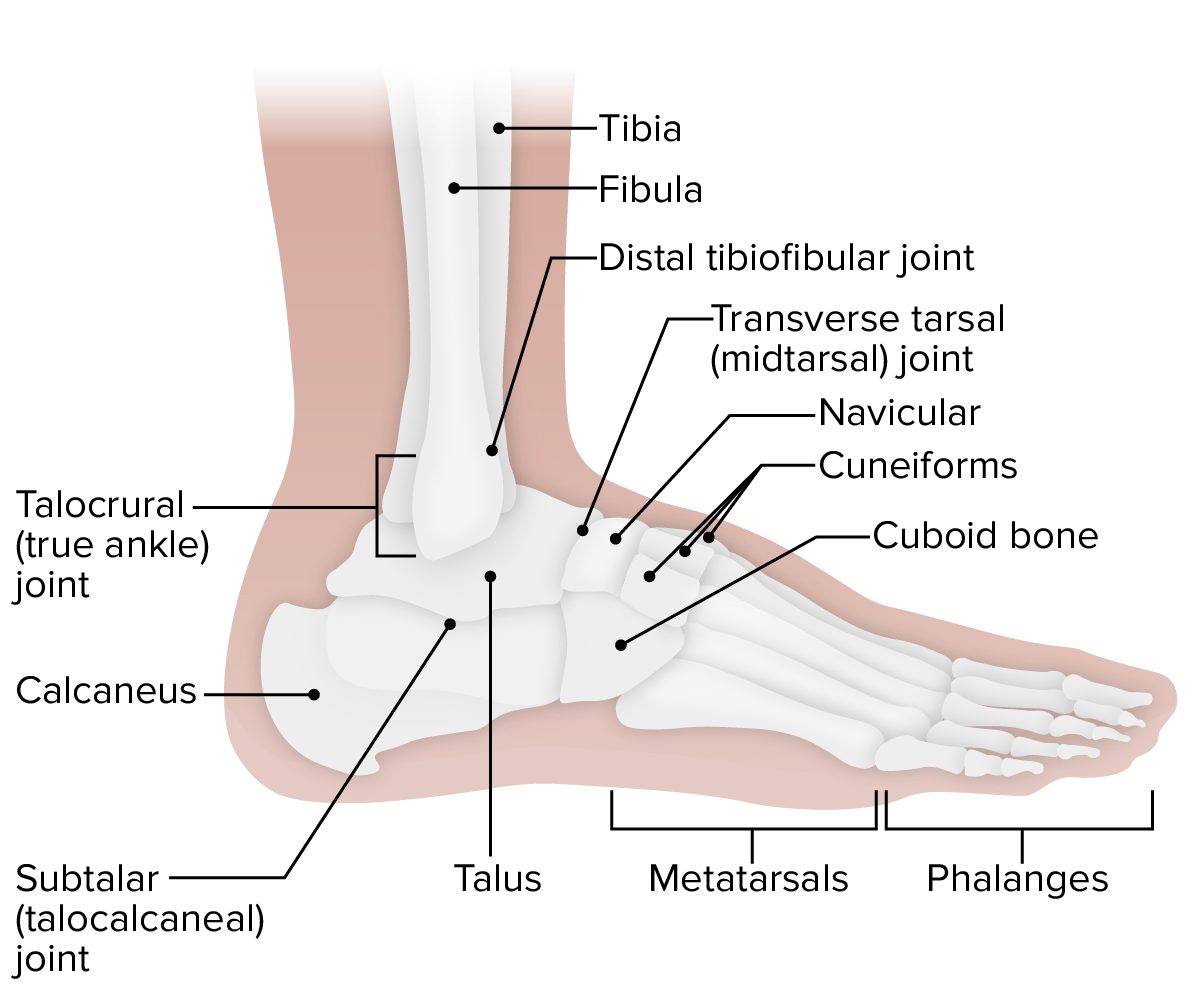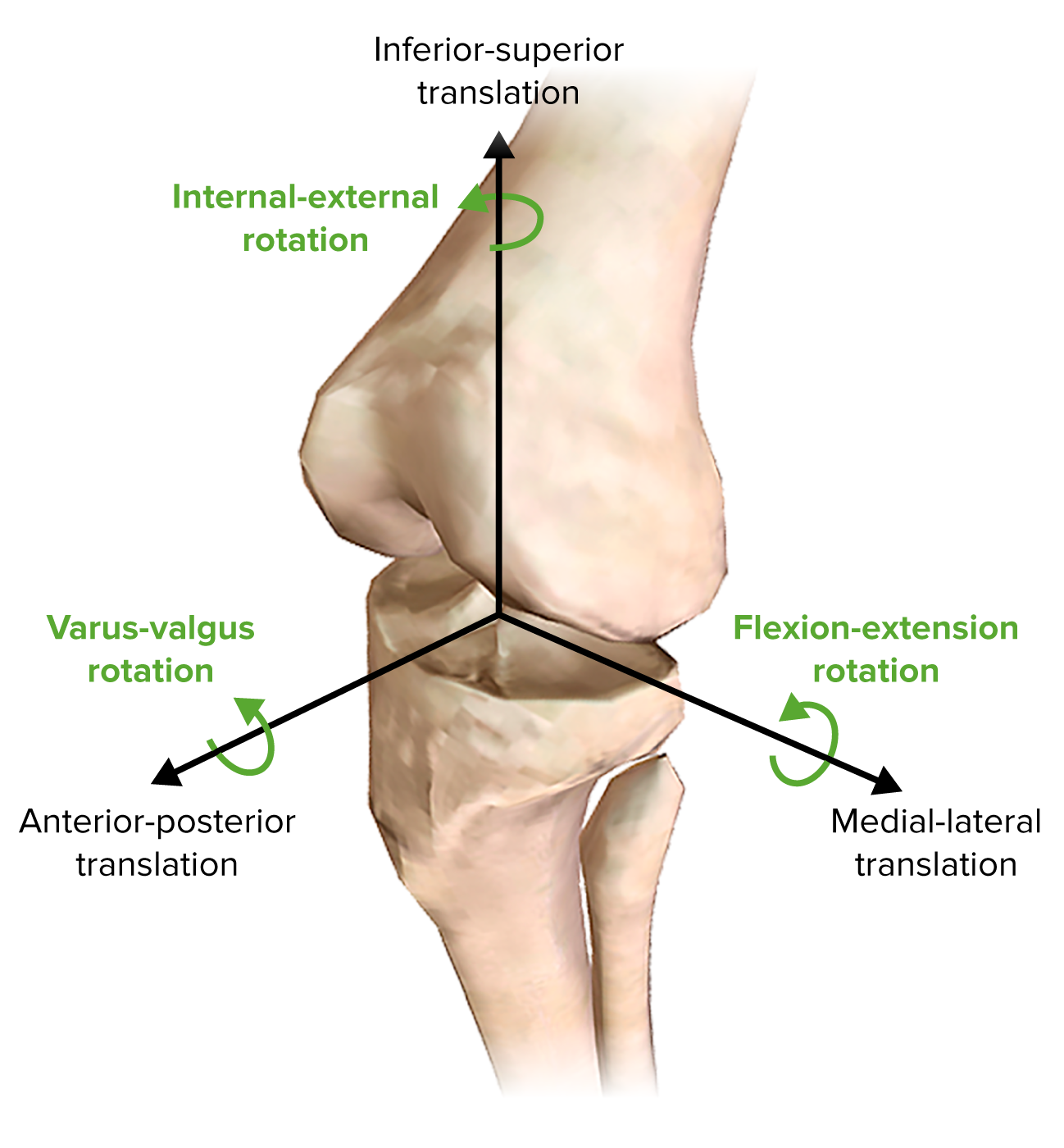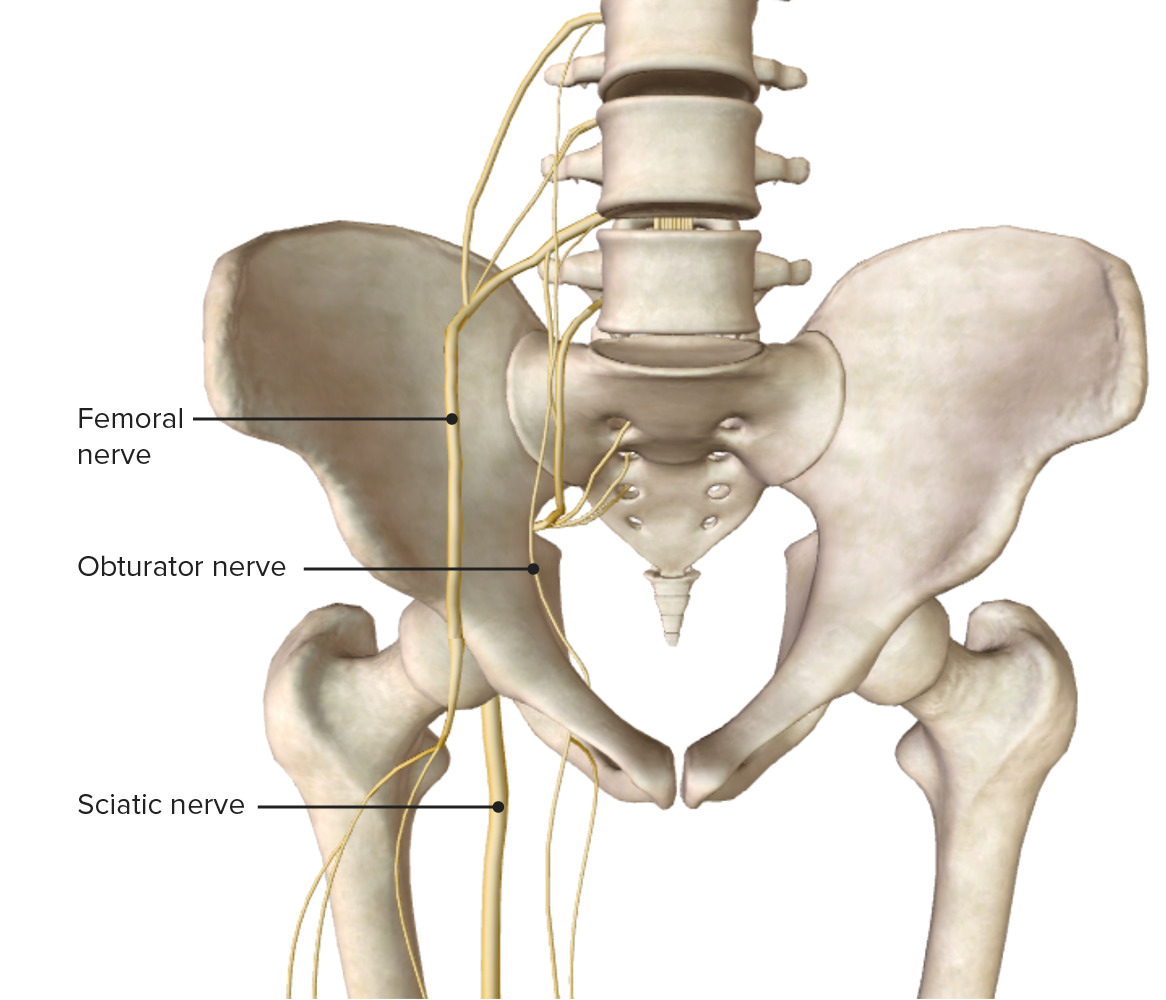Playlist
Show Playlist
Hide Playlist
Movement – Osteology of Lower Limb
-
Slides 01 LowerLimbAnatomy Pickering.pdf
-
Download Lecture Overview
00:00 and distal phalanges. Now let’s look at some of the movements that we have occurring at the lower limb. Here we can see movements that were occurring at the hip joints. 00:10 We have flexion and we have extension. We can see the hip joint being flexed in this direction, and then being extended as it’s returned to the standing position, and then hyperextended backwards in this direction. We can see we have abduction and adduction possible. 00:29 We have abduction, the leg is moved away from the midline, and we have adduction, we can see it’s brought towards the midline. And it’s actually possible of going across the midline and across the other standing leg. Here we can we have lateral and medial rotation occurring where the leg is turned inwards towards the body, lateral rotation, and it’s also turned outwards away from the body medial rotation. 00:55 We can see at the knee joint, we can continue to have flexion and extension where we see the knee is fully extended. Here, we can see it goes straight on from the thigh, and we can see it’s flexed when the heel is brought towards the posterior surface of the thigh. 01:10 Again, we can see we have medial and lateral rotation of the knee where the foot is turned either inwards or is turned outwards, medial and lateral rotation. If we look at the ankle joints, we can see we have dorsiflexion where your heel is on the floor and your toes are lifted upwards. And we have plantar flexion where your heel is lifted upwards and your forefoot, your toes, are depressed onto the floor. We can see we have inversion and eversion. 01:40 This is again occurring at the ankle joints. With inversion, the big toe, your number 1 toe is lifted up and your little toe, digit 5, is remaining on the floor. And conversely with eversion, you have your great toe, number 1, remaining on the floor, whereas, your little toe, digit number 5, is lifted up inversion and eversion. If we then look at the toes, you’ll see because we have the interosseous muscles which we’ll later on describe, that the toes is possible to abduct and adduct these individual digits. Along with this movement, there’s also a flexion and extension so you can dorsiflex and you can plantarflex your digits. 02:26 So in this lecture, we’ve looked at the surface anatomy of the lower limb, the inferior appendicular skeleton, we've looked at the gluteal, thigh, leg, and foot regions. 02:37 And then we’ve looked at the osteology of the lower limb. We’ve looked at the gluteal region where we had the ischium, the pubis, and the ilium of the hip bone. We looked at the thigh with the femur, the leg and the tibia, fibula. And then the foot looking at the tarsals, metatarsals, and phalanges, and looking at some bony landmarks on these bones. 02:56 And then to finish, we briefly looked at the movement of the lower limb.
About the Lecture
The lecture Movement – Osteology of Lower Limb by James Pickering, PhD is from the course Lower Limb Anatomy [Archive].
Included Quiz Questions
Medial rotation of the knee results in which of the following?
- Inward movement of the knee and foot
- Dorsiflexion
- Plantarflexion
- Inward movement of the foot only
- Inward movement of the knee only
During inversion at the ankle joint, which of the following occurs?
- The great toe is lifted.
- The heel is lifted.
- The little toe is lifted.
- All toes are lifted.
- The great toe is flexed.
Customer reviews
5,0 of 5 stars
| 5 Stars |
|
2 |
| 4 Stars |
|
0 |
| 3 Stars |
|
0 |
| 2 Stars |
|
0 |
| 1 Star |
|
0 |
It really explains the movement really well. step by step of each joint
Thank u very much that was very helpful and u made it very clear.






